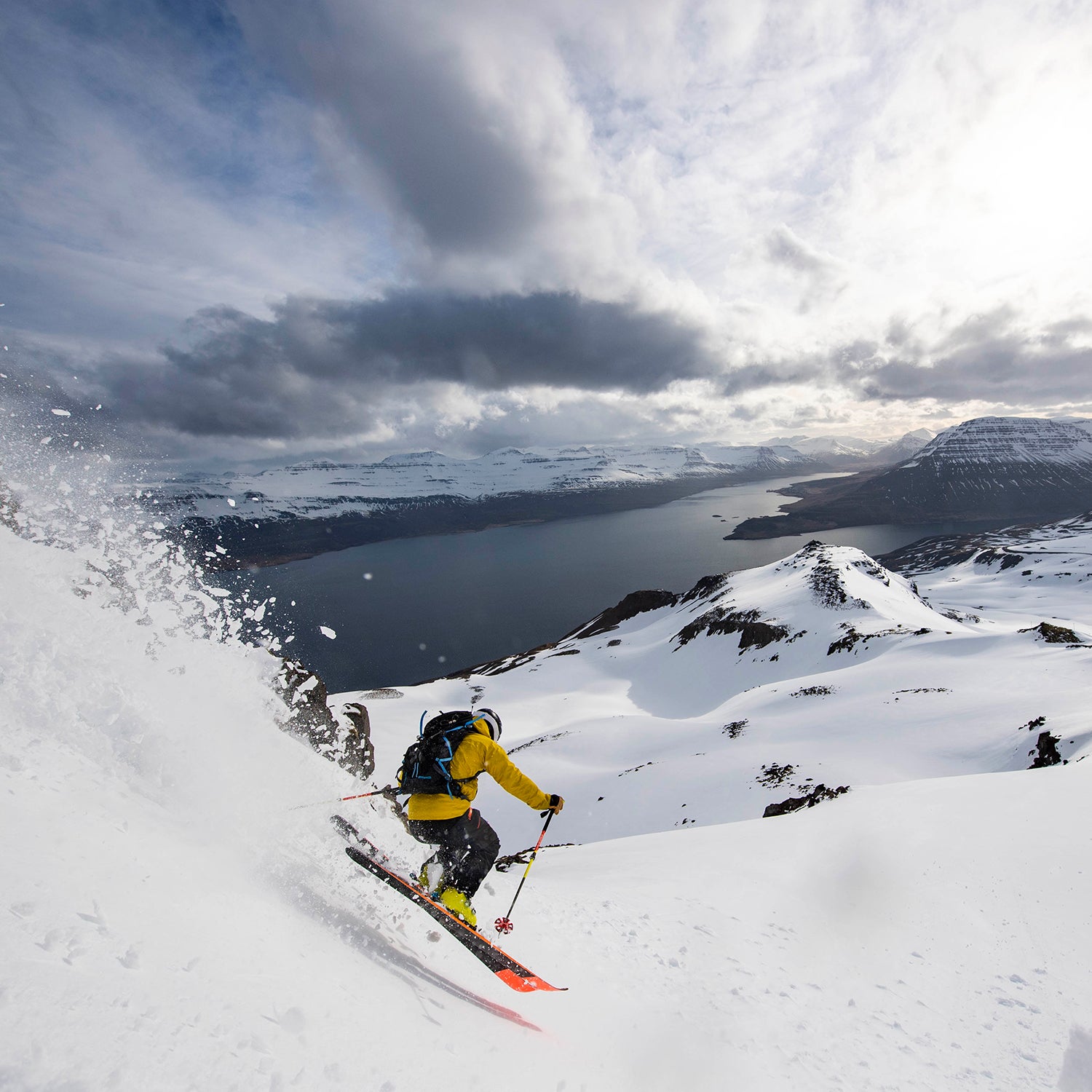In 2018, an avalanche violently knocked ski patroller Dave Watson off God’s Wall, a narrow, 50-degree, slide-prone slope at Oregon’s Mount Hood Meadows winter resort. The avalanche raked him over rocks, swept him off a cliff, and strained him through trees. Watson came to a stop facedown, unconscious, tacoed around a trunk. A tiny corner of his airbag was visible through the debris, and it allowed his ski partners to quickly locate him and dig him out. “The airbag 100 percent saved my life,” he says.
Last winter, the U.S. saw a record number of avalanche fatalities—37—in part due to a surge in backcountry winter sports. For travel through dangerous terrain, the transceiver, shovel, and probe trifecta has long been treated as nonnegotiable avalanche safety equipment. But research shows that airbags likely save more lives than transceivers. They significantly decrease the likelihood of burial, have the potential to lessen trauma, and possibly help prolong survival once someone is buried by creating an air pocket. So why haven’t they been universally adopted?
How Airbags Work
Airbags were invented in 1985 by entrepreneur and heli-skier , who realized they could keep people from getting deeply buried using the principle of granular convection: in a flow, larger- volume particles migrate to the top. Initially, airbags became popular in Europe, but they were slow to catch on in North America, where snowmobilers were among the early adopters. Two key studies from the and support their effectiveness: one analyzed 141 accidents from 1994 to 2003 and found that airbags decrease the chance of dying from 19 percent to 3 percent. The other analyzed accidents over nearly two decades and found that airbags dramatically reduce the chance of critical burial (head under the snow with airway blocked) from 47 percent to 20 percent. This is vital because 44 percent of people critically buried in a slide die (compared to just 3 percent of those who are partially buried).
In 2012, from the Swiss Institute for Snow and Avalanche Research set off four avalanches with crash test dummies. Eighty percent of the dummies without airbags were buried completely, but 100 percent of those with airbags wound up at least partially atop the snowpack, eliminating the need for a transceiver search. (It’s important to note that in the field, full burials with airbags .)
Airbags probably help prevent trauma too, according to experts at the , although to what extent is unknown. Anecdotes like Watson’s are compelling; he says that the 170-liter balloon strapped to his back protected him from rocks and trees.
In addition to decreasing the chance of burial and trauma, airbags may help prevent asphyxia. We know an air pocket is vital for survival in a burial. One airbag, the , automatically deflates three minutes after inflation in order to leave an air pocket. Utah physician Scott McIntosh to test this concept. Participants were buried under 1.5 meters of snow with an inflated airbag that was then deflated. They were monitored for oxygen saturation, carbon dioxide, and other vital signs. Eleven stayed under the snow for an hour without getting hypoxic. “In cases that result in full burial with a properly inflated airbag, the air pocket could mean the difference between death and living,” says McIntosh.
In comparison, transceivers function only once a person is buried, require a skilled partner, and likely don’t save as many lives. Invented by Cornell professor in 1968, transceivers reduce the mortality of buried persons ,. Transceivers do little to prevent the 24 percent of avalanche deaths that occur from trauma. And while transceivers dramatically reduce burial time from , the chance of survival plummets after ten minutes of burial. So even with a successful transceiver search, it’s often too late.
So if airbags save lives by reducing burial, decreasing trauma, and potentially creating an air pocket, why don’t we use them all the time?
Barriers to Widespread Use
Two possible reasons: airbags are heavy and expensive. They start at 4.5 pounds and $700 and march upward. But avalanche expert believes that price isn’t necessarily a factor, citing the way consumers frequently flock to expensive new technology. ( cost $600, and a from Arc’teryx can run you $750, for instance.)
Weight, however, is significant. Scott Schell, executive director of the , says professionals like guides often balk at the extra load. “Weight is a big thing when you work 150 days a year wearing a pack,” he says. Yet Schell points out that guides carry first-aid kits, repair kits, and evacuation sleds without consideration of poundage.
This leads to a crucial issue: airbags are not universally championed by experts. “The public accepted airbags prior to the professionals, which was not the case with transceiver, shovel, and probe,” says Schell.
Most North American avalanche groups have little to say about airbags. Ethan Green, director of the Colorado Avalanche Information Center (CAIC) feels airbags are a “secondary tier of equipment.” The requires a transceiver, shovel, and probe for its courses but doesn’t mention airbags. lists transceiver, shovel, and probe as “essential” and an airbag as “recommended.” And the lists airbags as “additional safety equipment.” Schell feels the industry needs to take the lead and make a recommendation for the public.
Some experts fear airbags may offer a false sense of security, and that people would take more risks if they were more widely used. But this argument could apply to any number of safety devices, including transceivers and helmets, and we still use them. Turn off your transceiver at the top of a steep slope and see how you feel, suggests Atkins. Your risk tolerance will likely plummet. (Just turn it back on before you descend!)
No safety tool is a guarantee, and proficiency and maintenance factor heavily in the success rates of both transceivers and airbags. The airbag failure rate is 20 percent, , in part due to user error—failure to pull the ripcord, for example. But user error exists with transceivers too: people forget to turn them on, batteries die, and sometimes people just can’t successfully locate a buried partner. Atkins advocates for real-world simulations with airbags. “Do somersaults down a slope and try to deploy it,” he says. Atkins tried this three times and was successful only twice.
Adoption of safety products is never immediate or universal. Think of car seatbelts in the 1970s. It takes time to build new habits and norms. Watson says he thinks some are hesitant to adopt new devices because of longstanding routines or resistance to adding new chores to their lists, like filling canisters or charging batteries. Others simply think, “It’s not going to happen to me.” But Watson, who has fully recovered, is now an advocate for using an airbag anytime you’re in avalanche terrain.


